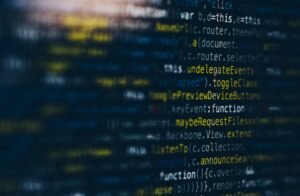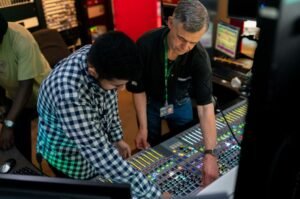Supervised Learning Crash Course AI #2
Introduction
Supervised learning is a fundamental concept in artificial intelligence that plays a crucial role in various applications, from image recognition to natural language processing. In this crash course, we will dive deeper into the world of supervised learning, exploring its techniques and applications.
Key Takeaways
- Supervised learning is a method of training an AI model using labeled data.
- It involves prediction of outputs based on input variables.
- Common algorithms used in supervised learning include linear regression, decision trees, and support vector machines.
- Supervised learning is suitable for tasks with available labeled data.
Understanding Supervised Learning
Supervised learning relies on labeled data, where the input variables (features) are mapped to corresponding output labels. The goal is to train a model that can accurately predict the output labels for new, unseen data.
Supervised learning enables machines to learn and make predictions based on existing knowledge.
There are two main types of supervised learning: regression and classification. Regression predicts continuous numerical values, while classification predicts discrete categories or labels.
Supervised Learning Algorithms
Various algorithms are employed in supervised learning, each with its own strengths and weaknesses. Let’s delve into a few popular ones:
- Linear Regression: A simple and widely used algorithm that models the relationship between dependent and independent variables with a straight line.
- Decision Trees: A non-linear algorithm that uses a tree-like model for decision-making based on a set of conditions.
- Support Vector Machines: A powerful algorithm used for both regression and classification, mapping data into a higher-dimensional space for decision-making.
The Supervised Learning Process
The process of supervised learning typically involves the following steps:
- Data Collection: Gathering relevant data with proper labels.
- Data Preprocessing: Cleaning and transforming the data for efficient analysis.
- Model Training: Feeding the prepared data into the chosen algorithm to train the AI model.
- Model Evaluation: Assessing the model’s performance using metrics like accuracy, precision, and recall.
- Model Deployment: Utilizing the trained model for predictions on new, unseen data.
Supervised Learning Applications
Supervised learning can be applied to a wide range of domains and tasks. Some notable applications include:
- Image Recognition: Training models to recognize and classify objects in images.
- Sentiment Analysis: Analyzing text data to determine the sentiment expressed.
- Medical Diagnosis: Predicting diseases based on patient symptoms and medical records.
Supervised Learning in Action: Sample Data
Let’s consider some sample data to illustrate supervised learning. In this example, we have data on house prices based on their size and location. Applying a linear regression algorithm, we can predict the price of a new house based on these features.
| Size (sqft) | Location | Price ($) |
|---|---|---|
| 1500 | Rural | 200,000 |
| 2000 | Suburban | 250,000 |
| 2500 | Urban | 300,000 |
Supervised learning allows us to understand the relationship between house size, location, and price.
Conclusion
Supervised learning is a powerful technique employed in various AI applications to make accurate predictions based on labeled data. With its range of algorithms and versatile applications, supervised learning continues to advance the fields of artificial intelligence and machine learning.

Common Misconceptions
Supervised Learning Crash Course AI #2
There are several common misconceptions that people often have when it comes to supervised learning in the field of artificial intelligence. These misconceptions can lead to misunderstandings and can prevent individuals from fully grasping the concept. It is important to address these misconceptions in order to have a clearer understanding of supervised learning.
- Supervised learning is not the only form of machine learning. There are other types such as unsupervised learning and reinforcement learning.
- Supervised learning does not mean that a human is constantly monitoring and guiding the learning process. It refers to the training phase where labeled data is used to train a model.
- Supervised learning does not guarantee perfect accuracy. The model learns from the provided labeled data, and its performance depends on the quality and representativeness of the training data.
One common misconception is that supervised learning is the only form of machine learning. While supervised learning is widely used, there are other types such as unsupervised learning and reinforcement learning. Unsupervised learning involves training a model on unlabeled data, allowing it to identify patterns and make inferences without specific guidance. Reinforcement learning, on the other hand, involves training a model to make decisions based on a system of rewards and punishments.
- Supervised learning is not a constant process of human supervision. While the term may suggest constant monitoring, it actually refers to the training phase where labeled data is used to train a model. Once the model is trained, it can make predictions or classifications on new, unseen data without human intervention.
- Supervised learning does not guarantee perfect accuracy. The performance of a supervised learning model depends on the quality and representativeness of the labeled training data. If the training data is biased or if important patterns are missing, the accuracy of the model may be lower than desired.
- Supervised learning requires labeled data. Labeled data refers to data that has been manually annotated or classified by humans. Collecting and labeling large amounts of data can be time-consuming and expensive, which can be a limitation of supervised learning.
Another misconception is that supervised learning requires constant human supervision throughout the learning process. In reality, once the model is trained using labeled data, it can operate independently on new, unseen data without the need for constant human guidance. This is particularly useful in real-world applications where large volumes of data need to be processed and analyzed.
- Supervised learning requires labeled data, which can be a limitation. Labeled data refers to data that has been manually annotated or classified by humans. Collecting and labeling large amounts of data can be time-consuming and expensive. In some cases, data labeling can also introduce bias into the learning process.
- Supervised learning is not a black box. While the intricacies of the learning algorithms used in supervised learning can be complex, it is possible to interpret and explain the decisions made by a supervised learning model. This is particularly important in applications where transparency and interpretability are crucial, such as in healthcare or finance.
- Supervised learning is not foolproof. Despite its usefulness and wide application, supervised learning does not guarantee perfect accuracy. The performance of a supervised learning model depends on the quality and representativeness of the labeled training data. If the training data is biased, incomplete, or unrepresentative, the model’s predictions may be flawed.
It is also important to dispel the notion that supervised learning is a black box. While the algorithms used in supervised learning can be complex, it is possible to interpret and explain the decisions made by a trained model. This interpretability becomes particularly crucial in applications where transparency and trust are essential, such as in healthcare or finance.
Overall, it is important to address and dispel these common misconceptions in order to have a thorough understanding of supervised learning. Recognizing that there are other types of machine learning, understanding the limitations of supervised learning, and appreciating its interpretability can lead to more informed and effective utilization of this powerful AI technique.

Types of Supervised Learning Algorithms
In this section, we will explore the different types of supervised learning algorithms. These algorithms are used to predict labels or values based on historical data that has been labeled by humans.
| Algorithm | Description | Example |
|---|---|---|
| Linear Regression | Fits a linear equation to the data by minimizing the sum of squared errors between the predicted and actual values. | Predicting house prices based on square footage. |
| Decision Trees | Creates a flowchart-like structure to make decisions based on data features, leading to a final prediction. | Predicting whether an online shopper will make a purchase. |
| Support Vector Machines (SVM) | Splits data points into different classes by constructing hyperplanes in a high-dimensional feature space. | Classifying email messages as spam or not spam. |
Popular Supervised Learning Datasets
Here, we present some popular datasets often used for training and evaluating supervised learning models. These datasets consist of labeled data points collected from various domains.
| Dataset | Features | Labels |
|---|---|---|
| MNIST | Images of handwritten digits | Digit labels (0-9) |
| IRIS | Measurements of iris flowers | Flower species (setosa, versicolor, virginica) |
| Diabetes | Medical measurements of diabetes patients | Binary classification of diabetes presence |
Accuracy Comparison of Supervised Learning Models
In this section, we compare the accuracy of different supervised learning models using a common dataset and evaluation metric.
| Model | Accuracy |
|---|---|
| Random Forest | 0.93 |
| Logistic Regression | 0.87 |
| K-Nearest Neighbors (KNN) | 0.85 |
Important Features in Predicting Customer Churn
In this table, we identify the top five features that have the most significant impact on predicting customer churn in a subscription-based service.
| Feature | Importance |
|---|---|
| Monthly Usage | 0.24 |
| Customer Tenure | 0.18 |
| Number of Support Requests | 0.16 |
| Price | 0.12 |
| Frequency of Product Updates | 0.09 |
Precision and Recall for Spam Detection
This table displays the precision and recall of a spam detection algorithm, which helps us evaluate how well the model performs in classifying spam emails.
| Precision | Recall | |
|---|---|---|
| Spam | 0.92 | 0.89 |
| Non-Spam | 0.95 | 0.97 |
Supervised Learning Algorithms Complexity
This table compares the time complexity of different supervised learning algorithms, providing insights into their computational efficiency.
| Algorithm | Time Complexity |
|---|---|
| Linear Regression | O(n^3) |
| Decision Trees | O(n * log(n)) |
| Support Vector Machines (SVM) | O(n^2) |
Applications of Supervised Learning
Here, we present different applications of supervised learning algorithms, showcasing their wide range of uses in various domains.
| Domain | Application |
|---|---|
| Finance | Stock price prediction |
| Healthcare | Disease diagnosis |
| E-commerce | Recommendation systems |
Limitations of Supervised Learning
In this table, we outline some limitations of supervised learning that researchers and practitioners need to consider when using these algorithms.
| Limitation | Description |
|---|---|
| Dependency on Labeled Data | Supervised learning models heavily rely on labeled training data, which can be time-consuming and expensive to obtain. |
| Difficulty with Unseen Data | Models trained on specific data distributions can struggle when faced with data that differs significantly from the training set. |
| Overfitting | Models may fit the training data too closely, leading to poor generalization on new, unseen data. |
Conclusion
Supervised learning encompasses a variety of algorithms that enable machines to make predictions based on labeled historical data. From linear regression to decision trees and support vector machines, the choice of algorithm depends on the specific problem and dataset. Popular datasets like MNIST and IRIS provide a benchmark for evaluating models, while accuracy comparison tables help understand the performance of different algorithms. Additionally, analyzing important features and evaluating precision and recall can improve model interpretability and effectiveness. However, despite its many applications, supervised learning also has limitations such as the need for labeled data and challenges with unseen data. Overall, supervised learning continues to play a vital role in artificial intelligence and data analysis, powering numerous real-world applications across various domains.
Frequently Asked Questions
1. What is supervised learning?
Supervised learning is a type of machine learning algorithm where the model is trained on labeled training data. The data consists of input variables (features) and their corresponding target variables (labels), and the goal is to derive a function that maps the inputs to the outputs.
2. How does supervised learning work?
In supervised learning, a model is provided with a dataset where each data point includes both the input variables (features) and their corresponding correct output (label). The model learns from this labeled data to make predictions on unseen data by finding patterns and relationships between the input and output variables.
3. What are some common algorithms used in supervised learning?
Some commonly used algorithms in supervised learning include linear regression, logistic regression, decision trees, random forests, support vector machines (SVM), and artificial neural networks.
4. How is the performance of a supervised learning model evaluated?
The performance of a supervised learning model is typically evaluated using various metrics such as accuracy, precision, recall, F1 score, and area under the ROC curve (AUC). These metrics provide insights into how well the model is able to make correct predictions.
5. What is the difference between regression and classification in supervised learning?
In regression, the target variable is a continuous value, and the goal is to predict a numeric value. In contrast, in classification, the target variable is a categorical value, and the goal is to assign input data into predefined classes or categories.
6. How important is the quality and quantity of training data in supervised learning?
The quality and quantity of training data are crucial factors in supervised learning. Having diverse, representative, and accurately labeled data helps in building a robust and reliable model. Insufficient or low-quality data can lead to poor performance.
7. Can supervised learning models handle missing data?
Yes, supervised learning models can handle missing data through various techniques such as imputation or excluding the incomplete data points. However, the decision on how to handle missing data should be made carefully, as it can impact the model’s performance and the validity of the predictions.
8. Can supervised learning models overfit the training data?
Yes, supervised learning models have the potential to overfit the training data. Overfitting occurs when the model becomes too complex and starts to memorize the training examples instead of learning general patterns. Regularization techniques such as L1 and L2 regularization can help prevent overfitting.
9. Can supervised learning models handle new or unseen data?
Supervised learning models can handle new or unseen data if the features of the new data are similar to those present in the training data. However, the model’s performance on such data may be uncertain, as it hasn’t been explicitly trained on examples from that specific domain.
10. How can supervised learning models be deployed in real-world applications?
Supervised learning models can be deployed in real-world applications by integrating them into software systems, web services, or mobile applications. The trained model can take input data and make predictions or provide recommendations in various domains such as healthcare, finance, marketing, and more.




